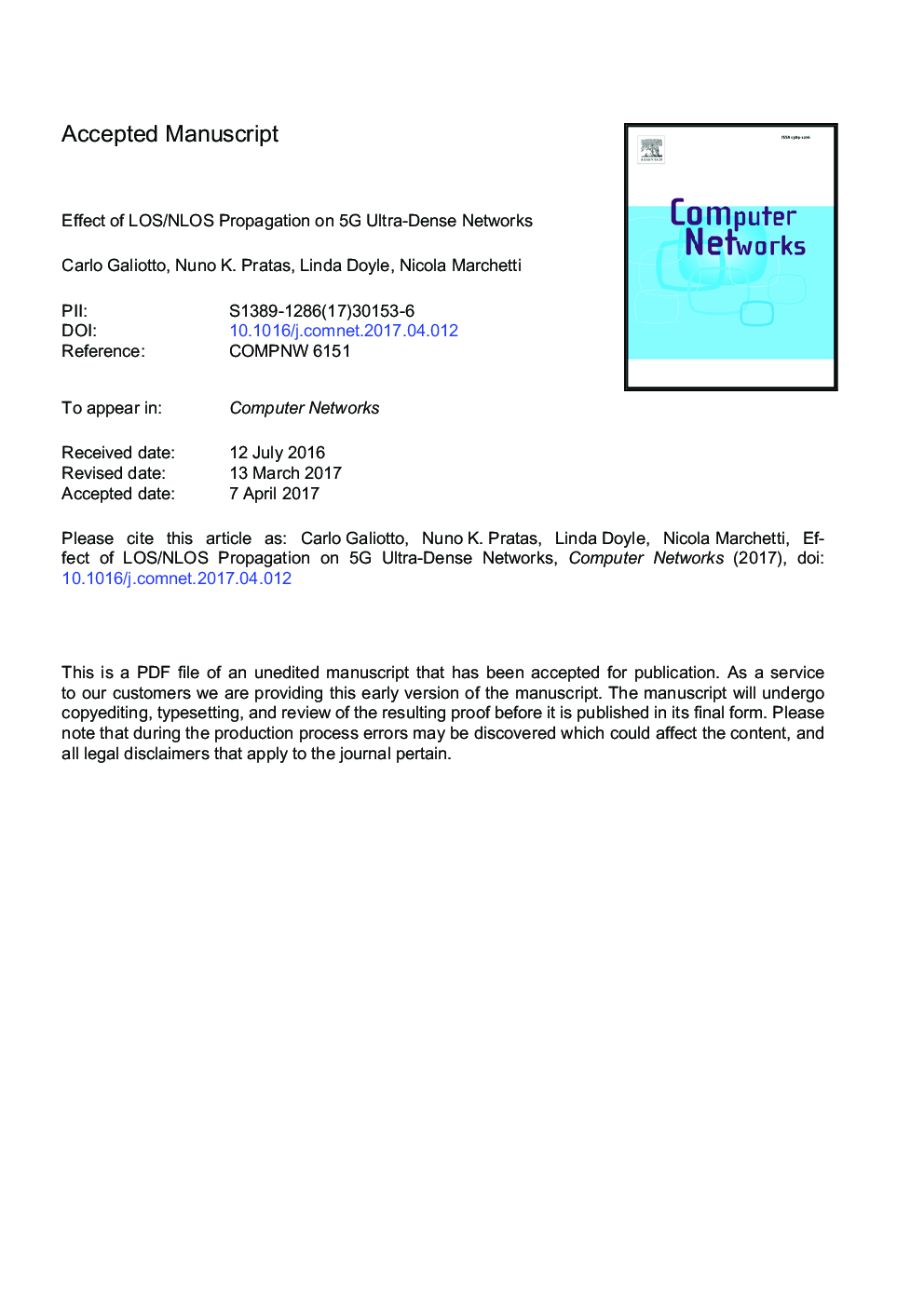| کد مقاله | کد نشریه | سال انتشار | مقاله انگلیسی | نسخه تمام متن |
|---|---|---|---|---|
| 4954672 | 1443900 | 2017 | 45 صفحه PDF | دانلود رایگان |
عنوان انگلیسی مقاله ISI
Effect of LOS/NLOS propagation on 5G ultra-dense networks
دانلود مقاله + سفارش ترجمه
دانلود مقاله ISI انگلیسی
رایگان برای ایرانیان
موضوعات مرتبط
مهندسی و علوم پایه
مهندسی کامپیوتر
شبکه های کامپیوتری و ارتباطات
پیش نمایش صفحه اول مقاله

چکیده انگلیسی
The combined presence of Line-of-Sight (LOS) and Non-Line-of-Sight (NLOS) components in the radio propagation environment can severely degrade the Ultra-Dense Networks (UDNs) performance. Backed by a stochastic geometry model, we show that when the LOS/NLOS propagation components are taken into account, and as the cell density increases, UDNs suffer from low coverage and the Area Spectral Efficiency (ASE) grows sub-linearly. However, we show that this performance drop can be compensated by increasing the frequency reuse factor or by steering the network into the partial load regime, which occurs when the base stations outnumber the users. In the former, it emerges that frequency reuse improves the ASE vs coverage trade-off of cell densification with respect to a traditional full frequency reuse, provided there is a degree of freedom on the density of cells; in addition, this trade-off improves with the frequency reuse factor N. Finally, we investigate the energy efficiency of UDNs for which we show that, as a combined result of LOS/NLOS propagation and partial load regime, up to two optimal base station densities exist. As a whole, our work provides novel insights on how to overcome the limitations and to take advantage of extreme cell densification in the upcoming 5G wireless networks.
ناشر
Database: Elsevier - ScienceDirect (ساینس دایرکت)
Journal: Computer Networks - Volume 120, 19 June 2017, Pages 126-140
Journal: Computer Networks - Volume 120, 19 June 2017, Pages 126-140
نویسندگان
Carlo Galiotto, Nuno K. Pratas, Linda Doyle, Nicola Marchetti,